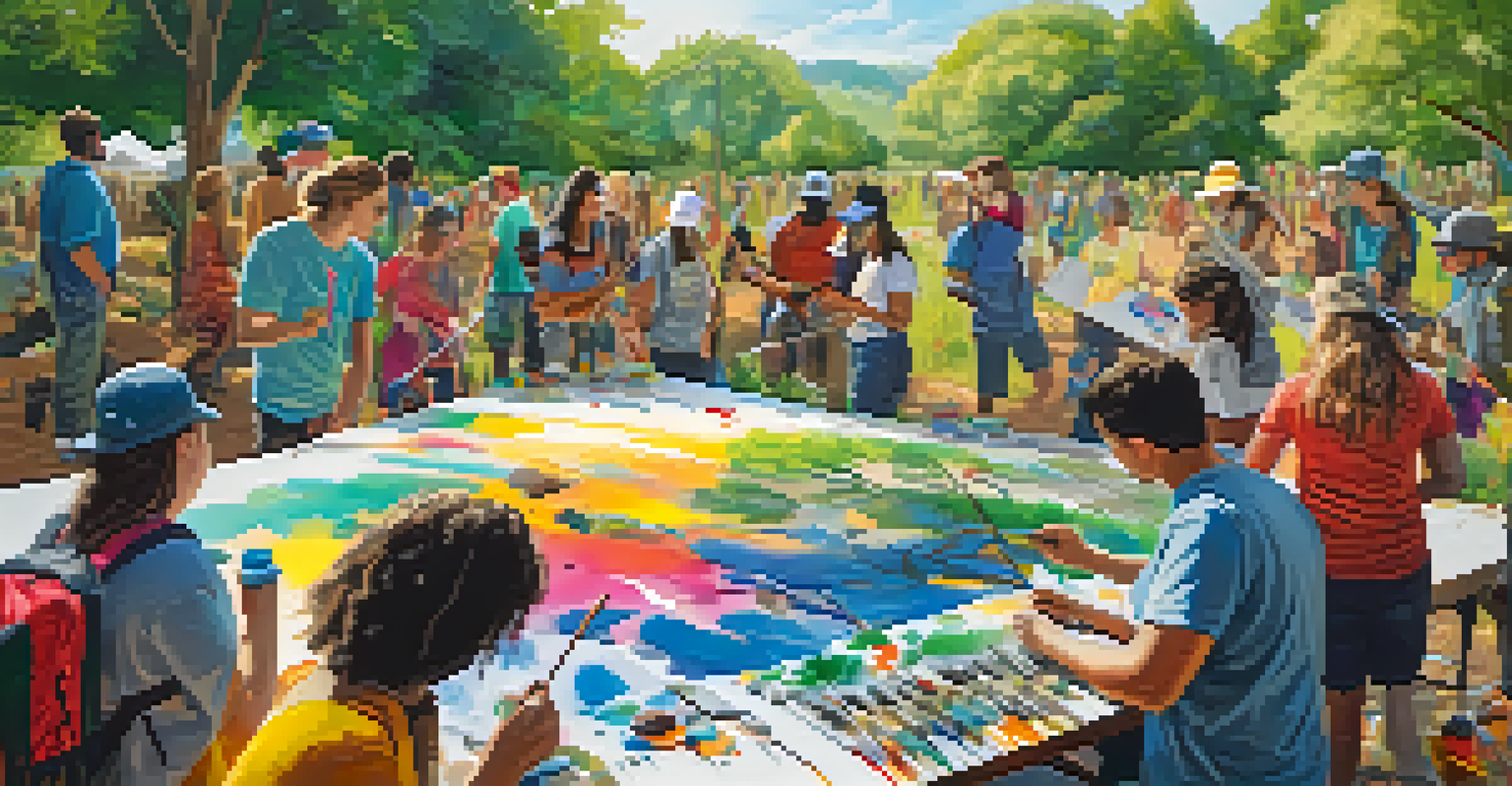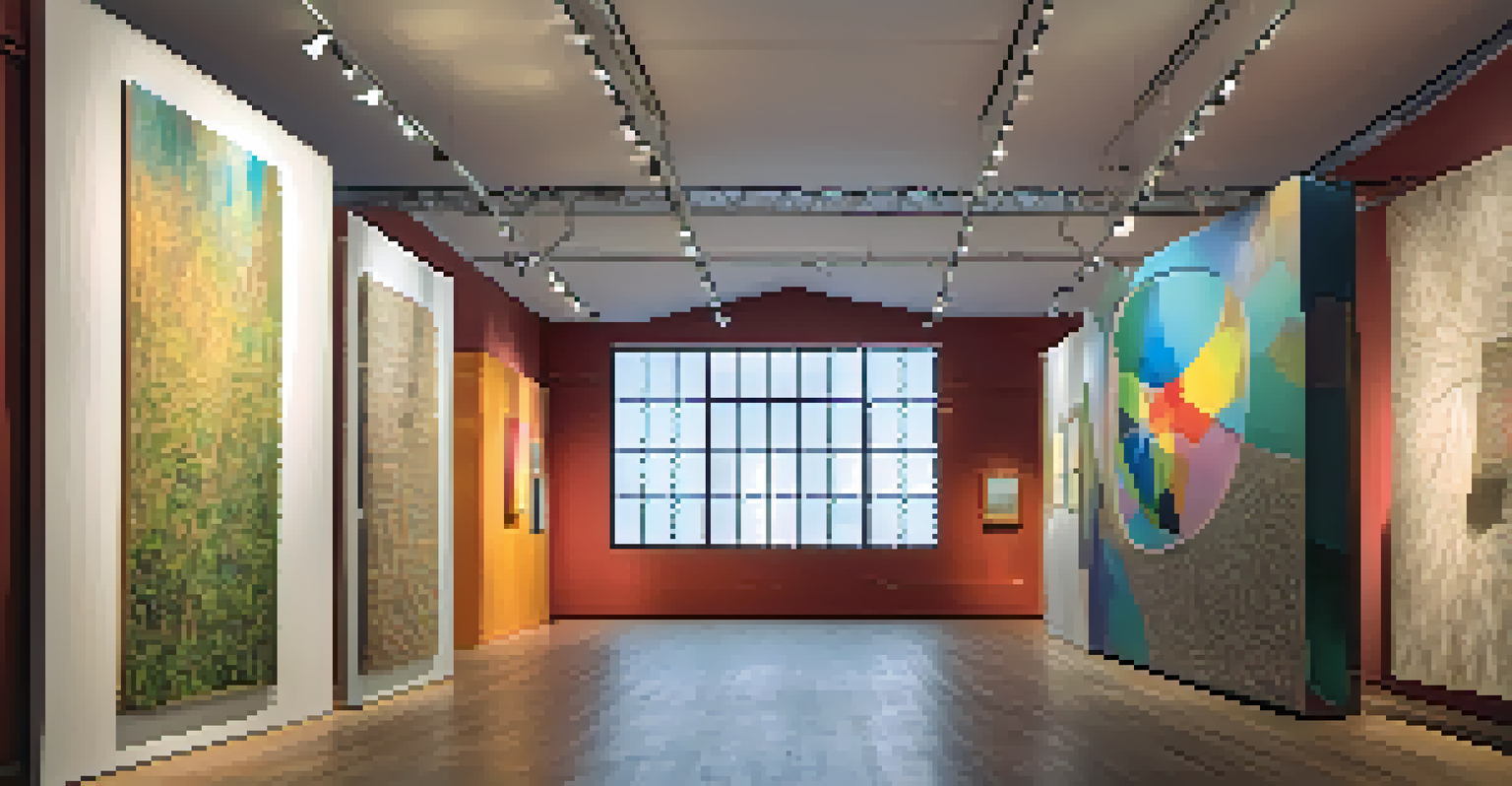Carved Messages: Using Art to Combat Climate Change

The Intersection of Art and Climate Activism
Art has always been a powerful medium for expressing ideas and emotions. In recent years, it has increasingly been used as a tool for climate activism. Artists are harnessing their creativity to raise awareness about environmental issues, making complex scientific data more relatable and engaging to the public.
Art is not a mirror to hold up to society, but a hammer with which to shape it.
By blending aesthetics with activism, artists create impactful visuals that resonate with people on a personal level. This approach not only highlights the urgency of climate change but also inspires action. For many, seeing a compelling piece of art can ignite a passion for environmental stewardship that statistics alone may not achieve.
Moreover, art invites dialogue around climate change, encouraging communities to come together and discuss solutions. By fostering a sense of connection through shared experiences, art can drive collective efforts toward a more sustainable future.
Carving Messages: Sculpture as a Medium
Sculpture, in particular, serves as a tangible form of artistic expression that can convey powerful climate messages. Carved from materials like wood, stone, or recycled items, these sculptures can represent nature’s beauty and fragility. For example, a sculpture depicting melting ice caps can evoke a visceral response to the realities of global warming.

The process of carving itself can symbolize the slow and often painful changes occurring in our environment. Just as artists chip away at stone to reveal their vision, we too must confront the layers of complacency that have built up around climate issues. This metaphor reinforces the idea that change requires both effort and patience.
Art as a Climate Activism Tool
Artists use their creativity to raise awareness about environmental issues and inspire action through engaging visuals.
Furthermore, sculptures can be placed in public spaces, making them accessible to a wider audience. This visibility ensures that the message reaches not just art enthusiasts but everyday people, prompting them to reflect on their own impact on the planet.
Murals: Colorful Calls for Action
Murals provide another dynamic avenue for communicating climate change messages. Often featuring vibrant colors and striking imagery, these large-scale artworks can transform urban landscapes into platforms for activism. They invite viewers to pause and reconsider their relationship with the environment.
The greatest threat to our planet is the belief that someone else will save it.
For instance, a mural depicting a thriving forest alongside a barren landscape can starkly contrast the consequences of deforestation. This visual storytelling captivates the audience and compels them to think critically about their actions. Murals, therefore, serve not just as decoration but as a catalyst for change.
Moreover, community involvement in mural creation fosters a sense of ownership and responsibility towards local environmental issues. When people contribute to the artwork, they feel more connected to the message, amplifying the impact of the piece within the community.
Digital Art: Reaching a Global Audience
In today's digital age, online art platforms provide an opportunity for artists to reach a global audience. Digital art can include anything from graphic designs to animated videos, all tailored to communicate urgent climate messages. This versatility allows for creative storytelling that can transcend language barriers.
For example, a short animated video illustrating the devastating effects of plastic pollution can be shared across social media platforms, exponentially increasing its reach. In this way, digital art acts as a bridge, connecting individuals from different backgrounds and fostering a global movement against climate change.
Sculpture and Murals Drive Change
Tangible art forms like sculptures and murals communicate powerful climate messages, fostering community involvement and reflection.
Additionally, the interactive nature of digital art can engage viewers in unique ways. Virtual reality experiences, for instance, can immerse participants in environments that showcase the beauty of nature and the impact of climate change, making the message all the more poignant.
Community Art Projects: Empowering Local Voices
Community art projects empower individuals to express their views on climate change while fostering a sense of collective responsibility. These collaborative initiatives often include workshops where community members can brainstorm ideas and contribute to the artwork. This process not only enhances creativity but also builds a strong community bond.
For instance, a community mural depicting local wildlife and natural landscapes can serve as a reminder of what is at stake. As participants engage in the creation of the mural, they become invested in protecting their local environment. This shared experience cultivates a culture of sustainability and activism.
Involving diverse voices in these projects ensures that a variety of perspectives are represented. This inclusivity helps highlight the multifaceted nature of climate change, making it clear that everyone has a role to play in the fight for a healthier planet.
Art Exhibitions: Showcasing Climate Issues
Art exhibitions focused on climate change can serve as powerful platforms for raising awareness and sparking conversations. These curated collections bring together works from various artists, each offering unique insights into environmental challenges. By showcasing a range of perspectives, these exhibitions can deepen the audience's understanding of climate issues.
For example, an exhibition featuring art made from recycled materials can highlight the importance of waste reduction and sustainability. Visitors are often surprised to see how beautiful and thought-provoking art can be when created from discarded items. This not only challenges perceptions but also inspires attendees to rethink their consumption habits.
Digital Art Reaches Global Audiences
In the digital age, online art platforms enable artists to share urgent climate messages worldwide, bridging cultural divides.
Additionally, such exhibitions encourage partnerships between artists, scientists, and activists, creating a multidisciplinary approach to addressing climate change. This collaboration can lead to innovative solutions and inspire new ways of thinking about how art can contribute to environmental advocacy.
The Future of Art in Climate Activism
As we move forward, the role of art in combating climate change is likely to grow even more significant. Artists will continue to experiment with new mediums and technologies, pushing the boundaries of how climate messages are communicated. This evolution will help maintain public interest and engagement in environmental issues.
Moreover, as more individuals recognize the emotional power of art, we may see increased support for artistic initiatives focused on climate change. This could lead to more funding opportunities and collaborations between artists and environmental organizations, amplifying the reach of their messages.

Ultimately, the future of art in climate activism depends on our collective ability to listen, engage, and respond to the urgent call for action. Through creativity, we can inspire change and foster a deeper connection with the planet, reminding us all that art is not just a reflection of the world but also a powerful tool for shaping it.